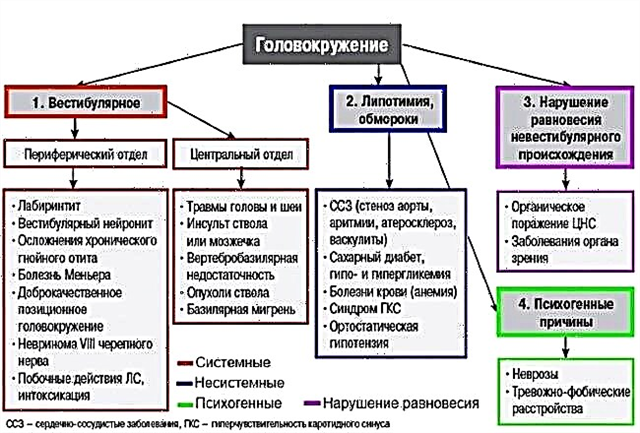Acute or chronic disturbances in the functional activity of the heart reduce its contractile ability. With the loss of normal physiological filling and emptying of the chambers, a failure occurs in the blood circulation of all organs. This leads to serious heart diseases, including heart failure I (HI), II, HIIA, HIIB, III (HIII) stages, death. Proper nutrition in case of illness will help remove excess fluid from cells, eliminate edema, normalize metabolic processes and get rid of shortness of breath.
Introduction
Chronic heart failure (CHF) is a cumulative syndrome caused by one or another disease of the circulatory system, the essence of which is an imbalance between the hemodynamic need of the body and the capabilities of the heart.
Clinically, CHF is manifested by five main symptoms:
- shortness of breath;
- rapid heartbeat;
- fatigue;
- decreased physical activity;
- fluid retention in tissues (edema).
Simply put, CHF is the inability of the heart to provide blood to the tissues in accordance with their metabolic needs at rest and under moderate exertion, provided that there is no hypovolemia and decreased hemoglobin.
Modern principles of nutrition for a patient with CHF
A rational and balanced diet is an essential factor in the treatment and prevention of cardiac diseases. An improperly composed daily diet is a fundamental link that causes the development of overweight, impaired lipid metabolism and carbohydrate tolerance, hypertension, and atherosclerosis. This, in turn, increases the risk of myocardial infarction, stroke, arrhythmias and, as a result, CHF.
Chronic heart failure is not an independent pathology. This is a consequence of a long-term illness that weakened the myocardium.
The main causes of CHF are one or a combination of the following pathologies:
- consequences of coronary heart disease (coronary heart disease), which is caused by atherosclerosis;
- arterial hypertension;
- valve defects (mitral, aorta, tricuspid);
- cardiomyopathy, inflammatory heart disease;
- rhythm disturbances (more often atrial fibrillation);
- diseases of the endocrine system: diabetes mellitus, hypo-, hyperthyroidism, Addison's disease, con);
- alcoholism.
The diet of a person with cardiovascular disease can contribute to:
- reducing the load on the myocardium and blood vessels;
- slowing down pathological changes in the vascular wall, improving their elasticity;
- lowering blood cholesterol levels;
- preventing the appearance of edema, which significantly impedes the normal functioning of the cardiovascular system;
- improving metabolism;
- reducing the required daily dosage of drugs for the treatment of CHF.
Medical nutrition is determined by a combination of many factors:
- food selection;
- determination of the ratio of individual foods and nutrients;
- optimal cooking methods;
- grinding degree;
- food intake regimen;
- calorie intake.
In order for nutrition in CHF to create an optimal background for enhancing the effect of the main types of treatment, to prevent the progression and complication of the disease, it is necessary to draw up a daily menu in such a way that:
- the patient received the necessary nutrients in full, taking into account existing diseases;
- a set of recommended products could be purchased at a reasonable price;
- the dishes were varied, relatively easy to prepare;
- individual intolerance and preferences of a particular patient were taken into account;
- the diet was divided into 4-6 meals, and in the evening, no more than 25% of the daily amount of food should be accounted for.
I recommend that my patients buy a scale at home and monitor their body weight 2-3 times a week. A set of 2-3 kilograms in 3 days indicates fluid retention and requires a doctor's consultation and correction of the treatment regimen.
Weighing is also necessary for patients with concomitant obesity. Loss of 10% of the initial body weight leads to a decrease in blood pressure by 5 mm. rt. Art., reducing the load on the heart, shortness of breath, pain in the joints, increasing the utilization of glucose by tissues.
What foods to exclude
The American Heart Association (AHA) identifies sodium and water as the main substances that need to be limited in heart failure.
Sodium Is a mineral that is found in many foods, especially convenience foods, junk food, salt. It promotes water retention in tissues, volume overload of the vascular bed, increased blood pressure, decompensation of cardiac activity.
AHA recommends a daily intake of no more than 2,800 mg of sodium (and ideally less than 1,500 mg).
Even a salt-free diet does not guarantee that a person does not exceed their daily sodium intake.
Most of the hidden salt is found in sausages, pickles and pickles, canned food, ready-made frozen dishes, cheeses (Parmesan, Brynza, Feta, Russian, processed), soy sauce, mayonnaise.
Water. Restriction of fluid intake for patients with hemodynamically stable CHF is moderate - up to 1.5-2 liters per day. With decompensation of cardiac activity and edema syndrome, requiring intensive use of diuretics, the daily amount of water should not exceed 1-1.2 liters.
Patients with diseases of the cardiovascular system are advised to exclude:
- fast food, semi-finished products, canned food;
- fried in oil, spicy, spicy foods;
- pickles and marinades;
- concentrated meat broths;
- fatty meats, offal, sausages, sausages;
- strong tea, coffee;
- alcohol, tobacco.
Important elements of the diet
The daily menu of a patient with CHF should first of all be balanced with respect to proteins, fats, carbohydrates, cover energy costs, and be saturated with microelements important for the heart.
Proteins. An important structural element of cells. It is recommended to eat 2-3 servings of protein daily.
Equivalent to one serving:
- 100 grams of fish, meat (lean beef, veal, poultry);
- ? cups of boiled beans or peas;
- 1 egg.
Protein restriction in the diet is only necessary in cases of renal failure and azotemia.
Milk products. The optimal amount is 2-3 servings:
- 100 grams of cottage cheese;
- 1 glass of milk with a fat content of 1-2%;
- 1 glass of kefir, fermented baked milk, curdled milk, yogurt without additives;
- 2 tbsp. l. sour cream with a fat content of no more than 15%.
Vegetables and fruits. This is the most important part of the diet, which provides the body with fiber, pectin, trace elements, vitamins and has a low calorie content.
You need to eat 5 servings per day:
- ? cups of chopped fruit (fresh or baked)
- ? cups of boiled or baked vegetables.
Porridge and bread... This part of the diet is responsible for the energy saturation of the body. Slow carbs should be preferred, eating 5 servings daily:
- 1 slice whole grain bread
- ? cups of pasta;
- ? cups of rice, buckwheat, oatmeal and other cereals.
Unsaturated fats and oils. The body needs to get the "right" fats, as they are the building blocks of all cell membranes. For cooking and dressing salads, it is optimal to use refined oils (olive, corn, sunflower, linseed).
Nuts (dried, no seasoning) are a good source of healthy fats. You can consume 1 handful (40 grams) per day.

To give food a brighter taste, salt can be replaced with aromatic herbs (parsley, basil, oregano, rosemary, caraway seeds, cilantro), garlic, onions, lemon juice, paprika.
Patients with atherosclerosis should pay special attention to the amount of dietary fiber in the diet (since they prevent the absorption of fatty acids from the intestines). Men need 76 grams per day, and women need 28 grams.
Also, if it is impossible for my patients to fully saturate the diet with the necessary vitamins and microelements, I recommend courses to take beekeeping products and food supplements enriched with potassium, magnesium, zinc, calcium, phosphorus (vitamins A, C, E, B1, B2, B6).
Regarding heat treatment: foods with heart failure are best boiled, stewed or baked. Grilling and Teflon-coated pan without oil are allowed.
Sample menu for a week
The DASH nutritional system developed by the American Heart Association is considered optimal for heart failure.

When drawing up an approximate 7-day menu for a patient with CHF, it is necessary to take into account the root cause of the disease and concomitant pathology. For example, if the causes of heart failure are coronary artery disease and atherosclerosis, special attention should be paid to limiting saturated fats, enriching the diet with pectin and fiber. And in diabetes mellitus, focus on eliminating foods with a high glycemic index.
There are low sodium substitutes (Himalayan salt, Saga) that can add a salty flavor to a dish. Potassium chloride can only be used after consulting a doctor and monitoring serum K levels.
For my patients, I provide a list of recommended dishes, and they combine the diet on their own, taking into account taste preferences, the available set of products and individual culinary skills.
Clinical case
My patient N. is 64 years old. History of hypertension stage III, 2nd degree. In 2015, he suffered acute Q-myocardial infarction of the anterior wall of the left ventricle, complicated by cardiogenic pulmonary edema. At the time of the first visit in 2016, the patient complained of shortness of breath, aggravated by physical exertion, palpitations, and swelling in the legs. Objectively: N. had the 1st Art. obesity (BMI - 34.4 kg / m22), AD - 145/100 mm. Art., heart rate - 89 beats / min. According to the examination results, hypercholesterolemia, hypokinesia of the anterior wall of the left ventricle, ejection fraction of 40%. The patient constantly took "Enap N", "Concor", "Furosemide", "Cardiomagnet", during the attacks he drank "Nitroglycerin". Was diagnosed with CHF IIA, IIFC. It was recommended to adjust the lifestyle, give up tobacco and alcohol, and selected a diet for heart failure for every day.
Over the course of 2 years, the patient gradually adapted to the new diet. At the last visit: BMI - 28.9 kg / m2, BP - 136/85 mm. Art., heart rate - 79 beats / min. Complaints of shortness of breath decreased, episodes of using "Nitroglycerin" no more than 1 time per week. The patient notes a significant increase in physical activity. Based on the results of the consultation, Furosemide was canceled.
From the list, the patient chooses 3 main meals and 2-3 snacks.
Breakfast
- Oatmeal, buckwheat, corn, rice porridge, 40 grams, boiled in milk and water in a 1: 1 ratio with 1 teaspoon of honey, 1 boiled egg, herbal tea.
- Omelet of 2 eggs with 1–2% milk (100 ml), a slice of whole grain bread, an apple, tea.
- 300 grams of pumpkin-rice (or millet) pudding, 30 grams of hard cheese.
- 200 grams of cheesecakes with berries and 1 tbsp. sour cream or honey, cocoa in low-fat milk.
- Oatmeal with 2 tbsp. oatmeal, 1 egg with 30 grams of hard cheese, fresh cucumber, tea.
- Vegetable muffins with green peas, green beans and bell peppers, tea.
Dinners
- Vegetable puree soup (300 grams), 100 grams of boiled meat, 1 slice of bread.
- Lean borscht (300 grams), 100 grams of stewed or baked poultry, a slice of bread.
- Vegetable salad with vegetable oil, steam cutlet with porridge garnish, compote.
- 100 grams of pasta with vegetable sauce, 100 grams of meat, fresh vegetables.
- Lentil soup, 300 grams, 100 grams of baked fish with vegetables.
Dinners
- 200 grams of baked fish with a vegetable side dish.
- Peppers, eggplants or zucchini stuffed with chicken and baked in the oven.
- Squid vegetable salad with lemon mustard dressing, 1 slice of whole grain bread with 30 grams of cheese.
- Boiled beans salad with vegetables, seasoned with vegetable oil or yogurt with herbs, whole grain bread.
- Vinaigrette with beans, seasoned with olive oil.
- Steam poultry cutlets with stewed cabbage.
- Baked potatoes in peel with yoghurt, herbs and garlic sauce and vegetable salad.
- Omelet with asparagus beans, fresh vegetables.
Snacks
- A handful of dried nuts.
- Oven baked apple with honey, cinnamon and cottage cheese.
- 100 grams of cottage cheese and 100 ml of fermented baked milk or 1 tbsp. sour cream.
- 1 banana, apple or pear.
- 1 cup chopped fruit
- 200-250 ml of fermented milk drink.
- A slice of bread with 30 grams of cheese.
- 200 grams of milk pudding.
- 10 pieces. prunes or dried apricots.
- 1 handful of raisins
- 1 glass of kefir, yogurt or fermented baked milk.
This "backbone" allows the patient to program a weekly menu, and eventually enter new recipes from the list of approved products.
Doctor advises
Life hacks for adapting the diet:
- In the store, study the label carefully. Most manufacturers in the composition indicate the concentration of sodium per 100 grams. Choose foods with less than 350 mg Na per serving. It is also worth paying attention to the calorie content, amount and ratio of fat.
- Choose simple dishes with minimal cooking.
- Print recommended, prohibited foods on separate sheets and hang them on the refrigerator.
- Buy a multicooker and grill pan if possible. This will simplify the cooking process and reduce the amount of fat in the food.
- For frying, use Teflon or ceramic coated pans. Apply vegetable oil to the surface with a silicone brush.
- Conduct an audit of the shelves, throw away all harmful semi-finished products, fast food.
- Replace the salt shaker with a bowl of salt and a teaspoon. This will make sodium counting easier.
- Salt food on your own plate.
- Remove salt from the table. Place jars of dried herbs, onions, garlic, lemon. This will diversify the taste of the dishes.
Conclusions
Undoubtedly, lifestyle, food culture and physical activity significantly affect the course of cardiovascular diseases. A serious approach to organizing your diet will allow the patient to feel better, reduce the risk of complications and hospitalizations, and, in the long term, improve the quality of life and give up some medications.
Nutrition for heart failure is a balanced, varied, nutrient-rich menu that a person must adhere to throughout his life.



